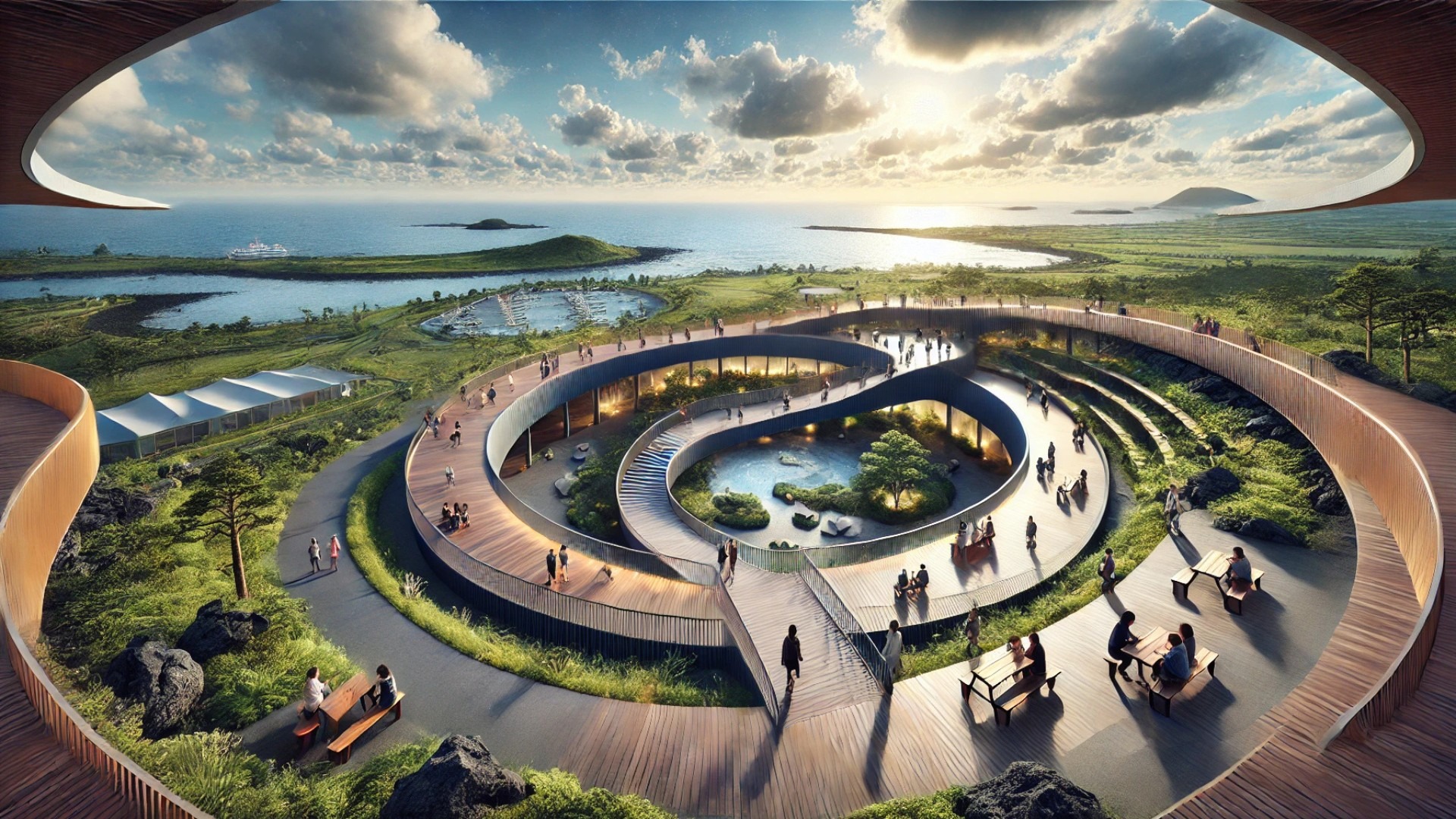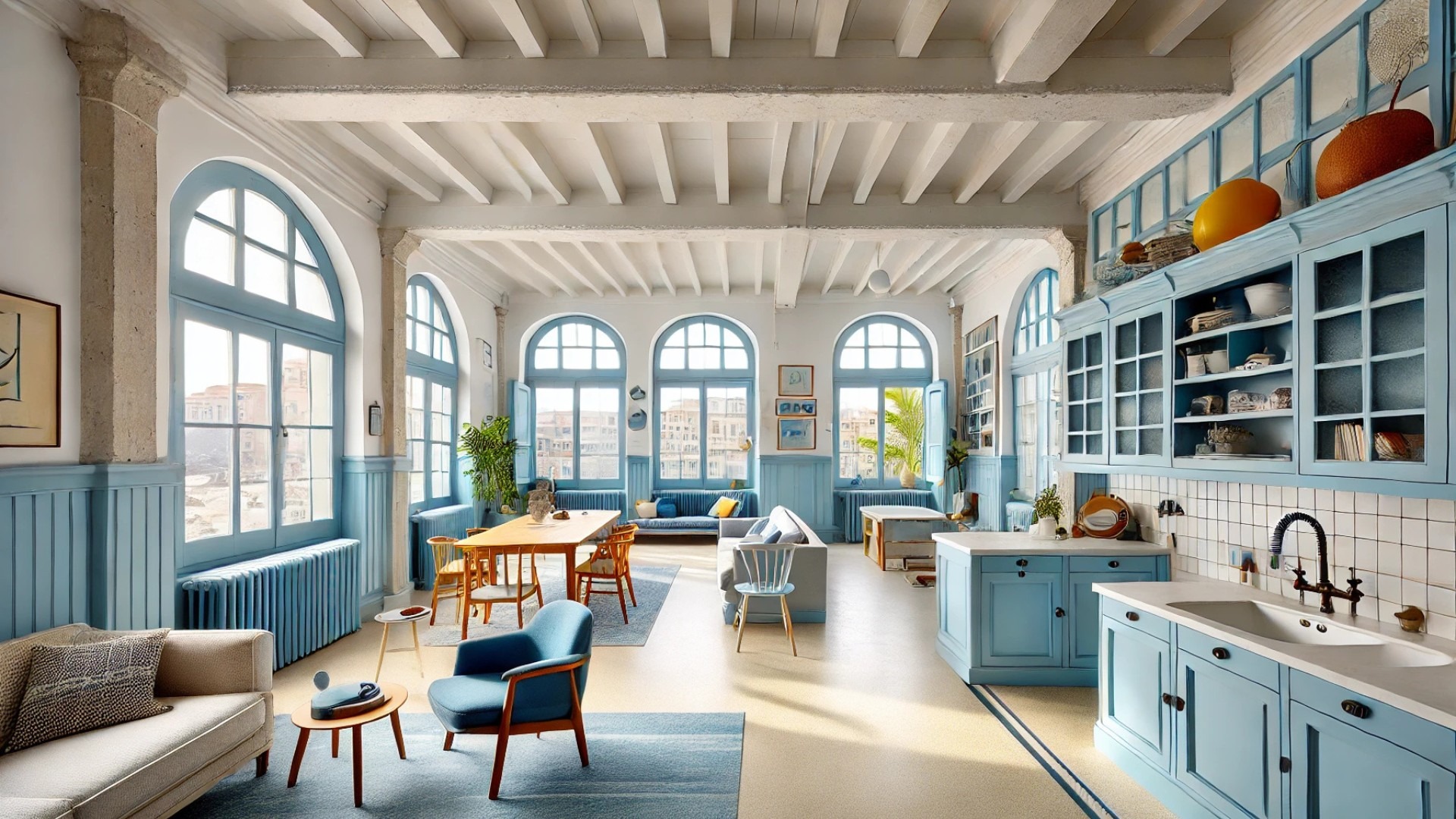
Introducing Circular Loop: A New Experience in South Korea
In 2023, HaengUnSiWoo Architects unveiled Circular Loop, an innovative eco-experience center nestled within the picturesque Gangjeong Cruise Terminal in South Korea. This architectural wonder embodies accessibility and engagement with nature, elegantly merging form and function amidst the stunning backdrop of Jeju-do.
Breaking Down Barriers with Design
Strategically positioned to combat the challenges presented by a significant 10-meter slope, Circular Loop creatively connects critical components of the site, such as the parking lot and the circular plaza. Rather than taking height into account, the architects opted for width, fostering an inclusive environment. This cyclical structure enhances the visitor experience by ensuring seamless accessibility from any angle, allowing everyone, no matter their mobility, to partake in the stunning views and experiences along the way.
The Dance of Form: Why Circles?
The circular design is not merely aesthetic; it symbolizes the very essence of a terminal, a space of perpetual arrival and departure. This design choice echoes the broader trend towards circular economies, where resources are reused to create lasting impact—in this case, enhancing the visual and experiential narrative of the site. Indeed, circularity has become a guiding principle in both architecture and South Korea’s recent economic strategies aimed at sustainability.
A Harmonious Blend of Spaces
Within Circular Loop, diverse viewpoints are crafted, offering visitors a dynamic visual treat that redefines their interaction with the environment. Architecturally, the structure promotes unique spatial compositions, allowing the landscape's contours and vegetation to dictate the interactions space, transforming mere scenery into a narrative jam-packed with possibilities for leisure, relaxation, and community gatherings.
Contextual Sensitivity in Architecture
One of the crucial decisions in the design process was the selection of materials. The architects chose to harmonize new elements with existing features, such as reusing black basalt stone and incorporating grassy areas for picnicking. This thoughtful approach not only enhances the aesthetic appeal but also reinforces the philosophy of sustainable luxury, wherein every material choice contributes to both function and visual richness.
The Bigger Picture: Architectural Trends in South Korea
In line with Circular Loop, South Korea has been advancing a circular economy strategy aimed at promoting sustainability across various sectors, including architecture. The government intends to establish systems that prioritize the recycling of materials and promote eco-design principles in numerous industries. This parallels the architectural community's commitment to creating structures that not only serve immediate needs but also support long-term ecological goals.
Engagement Opportunities for the Community
Circular Loop is not just a space for passive observation; it fosters a communal environment where individuals can interact, observe, and appreciate their surroundings. The integration of walking trails and observation areas within the loop invites active participation from the community, encouraging a connection with the local environment—an embodiment of what modern public architecture should aspire to achieve.
In summary, Circular Loop is a testament to innovative design and sustainable principles, marking a significant step in South Korea's architectural landscape. By placing the principles of accessibility, sustainability, and community engagement at its core, this project sets an inspirational example for future developments in public architecture.
 Add Row
Add Row  Add
Add 

 Add Row
Add Row  Add Element
Add Element 




Write A Comment